Chin Augmentation in South Africa
Search and Compare the Best Clinics and Doctors at the Lowest Prices for Chin Augmentation in South Africa

Find the best clinics for Chin Augmentation in South Africa
With Medijump you can browse 5 facilities offering Chin Augmentation procedures in South Africa. The cheapest price available is $266 in Cape Town. And for the cheapest price globally, prices start from $70 in Singapore.
Chin Augmentation in Cape Town
Price: $ 266
Singapore offers the best prices Worldwide
Price: $ 70
From 3 verified reviews
Andrea Coetzee, 24 May 2019
Amazing service, professionalism and an absolute expert.
From 5 verified reviews
Fiona Marais, 20 September 2020
Great service, top quality treatments.
Dr Dawid Potgieter, can be found in Syfred Douglas St, Cape Town, South Africa and offers its patients Chin Augmentation procedures as well as 90 other procedures, across 1 different procedure categories. At present, there is no pricing information for Chin Augmentation procedures at Dr Dawid Potgieter. The pricing information is quite specialised, so it's only available on request, and the average price is around $266. The lead specialist at the Hospital will be carrying out all the treatments, and Dr Dawid Potgieter has several accreditations, including: HPCSA - Health Professions Council of South AfricaDepartment of Health, Western CapeFCS(SA) - Fellowship of the College of Surgeons of South Africa
From 16 verified reviews
Rebecca O'Connor, 23 September 2020
Dr. Gideon Maresky is amazing. I underwent otoplasty and rhinoplasty procedures and couldn't have asked for a better experience. Everything ran very smoothly.
Dr Magda Fourie, can be found in Syfred Douglas St, Cape Town, South Africa and offers its patients Chin Augmentation procedures as well as 13 other procedures, across 6 different procedure categories. At present, there is no pricing information for Chin Augmentation procedures at Dr Magda Fourie. The pricing information is quite specialised, so it's only available on request, and the average price is around $266. The lead specialist at the Hospital will be carrying out all the treatments, and Dr Magda Fourie is accredited by just one known accreditations institute, HPCSA - Health Professions Council of South Africa
- Home
- South Africa
Compare Before & After Photos of _procedure_photos.phpChin Augmentation


Front view
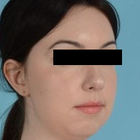
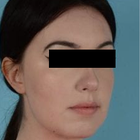
Half-side view
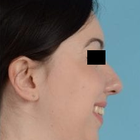
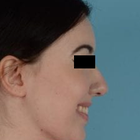
Full-side view
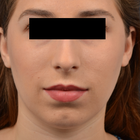

Front view
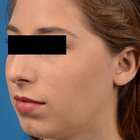

Half-side view
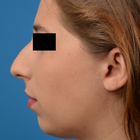
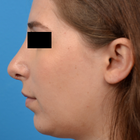
Full-side view
WHY US?
At Medijump, we're making medical easy. You can search, compare, discuss, and book your medical all in one place. We open the door to the best medical providers worldwide, saving you time and energy along the way, and it's all for FREE, no hidden fees, and no price markups guaranteed. So what are you waiting for?

Free

Best Price

Widest Selection

Risk-Free
What you need to know about Chin Augmentation in South Africa
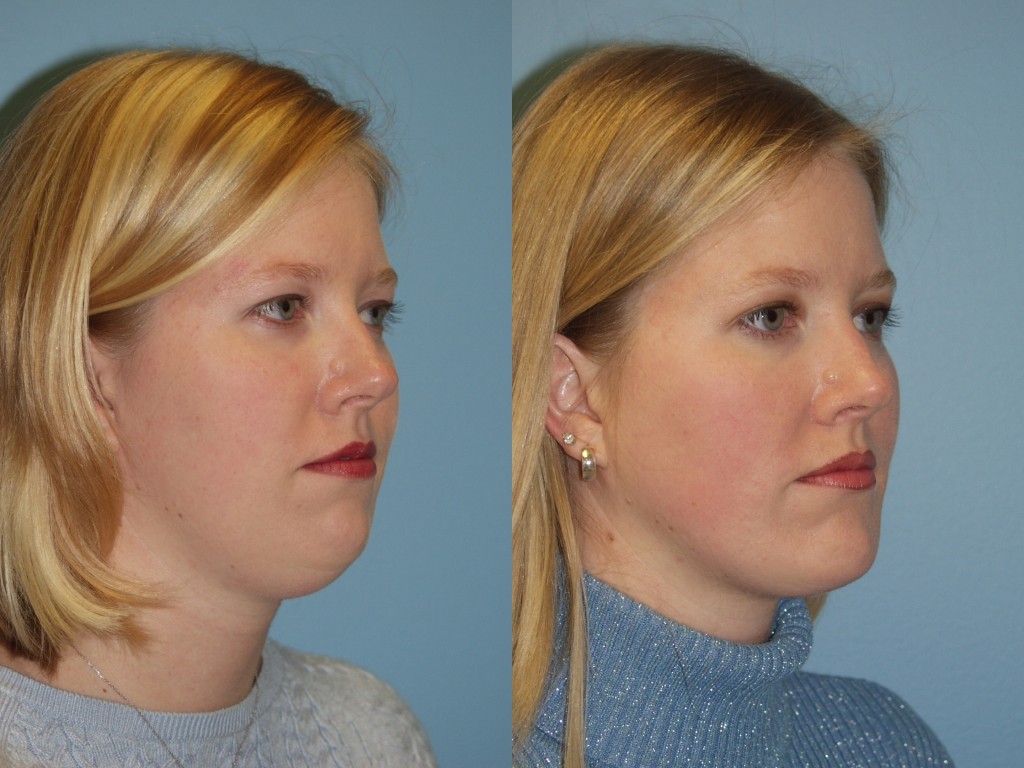
Chin augmentation is a type of genioplasty or mentoplasty (chin surgery). It is a cosmetic surgery done to balance your lower face by altering the soft tissue, skeletal, and dental parts of your face. This type of cosmetic surgery is perfect for both men and women who think that their chins are not shaped proportionally to the rest of their face. The procedure is normally performed at the same time as rhinoplasty or facial liposuction.
There are two key features to a balanced facial profile, your nose and your chin. The chin is an essential feature of your appearance and if it is understated, it will make your facial profile uneven. Typically, a strong and broad chin is considered attractive to men. While a more delicate and narrow chin is appealing to women. However, whether you are a man or a woman, if you are not happy with how your chin looks you may choose to have cosmetic surgery to aid your appearance.
A chin augmentation procedure is usually done to contour your chin and make it:
- More prominent
- Broader in size
- Rounder or more angular
- Project more
- Reduce the appearance of double chin caused by a small chin bone
What is the cost of Chin Augmentation in South Africa?
Variances in the price of a Chin Augmentation in South Africa may emerge due to multiple influences. Elements that can influence the cost include practitioner expertise, geographical positioning of the service, anaesthetic costs, medical center charges, and the price of post-operative wear and medication. Some medical facilities even offer bundled services encompassing the procedure, recuperation, and follow-up care expenses. Ensuring all prospective costs are eluded during consultation can help avoid surprise bills. Explore healthcare insurance options and payment plans designated for patients that could potentially lessen the financial burden of the procedure.
By opting for a Chin Augmentation in South Africa, patients are making a valuable investment in their self-worth and physical appearance. While the financial dimension is a crucial consideration, it shouldn't be the sole deciding factor. Giving precedence to the qualifications of the doctor, the standard of care, and safety measures can help ensure long-lasting and gratifying results. Call a local clinic to get more details on costs.
What does a Chin Augmentation Procedure Involve?
Chin Augmentation can be performed via two types of procedure:
- Chin implants - for chin enlargements, to reshape or push forward your chin’s appearance.
- Sliding genioplasty or Osseous genioplasty (Chin reduction) - this type of approach is for those who aim to have a less prominent jaw appearance.
Good candidates for this type of surgical cosmetic procedure should:
- Be in good health
- Have reasonable and realistic expectations about the outcome of the surgery
- Should not suffer from cardiac problems or hypertension
If you undergo a chin reduction, during your cosmetic treatment procedure:
- You will most likely be under general anesthesia
- An incision will be done inside your mouth along with your lower gum. This will give your surgeon access to your chin bone.
- A bone saw or chisel will be used to make a second cut through your jaw bone. Your jaw bone will then be moved and wired or screwed in place.
- Sutures will be used to close the incision and bandage will also be applied. Since the cut was made inside your mouth, scars will not be visible.
- The procedure will approximately take one to three hours.
As for chin implants, during your cosmetic treatment procedure:
- You may opt for general anesthesia or you may also choose to go under local anesthesia with sedation.
- An incision can be made inside your mouth or outside, under your chin. A pocket will be created under your chin bone and under your muscles. The implant will then be placed inside.
- Your surgeon may use your bone, fat tissue or an implant made out of silicone.
- Your implant will be attached to your bones with stitches or screws.
- Sutures will be used to close your surgical cut. If the cut was made inside your mouth, the scar will barely be seen.
How Long Should I Stay in South Africa for a Chin Augmentation Procedure?
After your Chin Augmentation in South Africa, your surgeon will recommend a duration of stay for close monitoring and follow-up visits. The duration of your stay typically depends on the specifics of your procedure, your overall health, and the speed of your recovery. If the procedure is uncomplicated, you may be able to leave the hospital on the same day. However, a stay of around 2 to 4 days may be recommended for post-surgery observation and initial recovery. Your surgeon will provide guidelines for activity restrictions, dietary modifications and incision care during this period.
Most patients plan to stay in South Africa for approximately 1 to 2 weeks after the procedure for regular check-ups and to ensure optimal healing. After returning home, you may be asked to restrict strenuous activity for a few weeks under the supervision of your local healthcare provider. Remember, your journey to wellness involves commitment to the full recovery process.
What's the Recovery Time for Chin Augmentation Procedures in South Africa?
Recovering from a Chin Augmentation is a several-week process, starting with initial discomfort and swelling, managed by painkillers, elevation, and cold compresses. By week two, major swelling subsides, revealing preliminary results. Adherence to a nutritious diet, avoiding strenuous activities, and following the doctor's post-op instructions are crucial for a smooth recovery. The full effect of the procedure should be visible within 1 to 3 months, noting individual recovery times may vary.
What sort of Aftercare is Required for Chin Augmentation Procedures in South Africa?
Post-operative care is a crucial component in ensuring the fruition of a Chin Augmentation in South Africa. Upon returning home, directives may include continued use of prescribed medications, application of healing ointments, and the upkeep of cleanliness and dryness at the surgical site. Regular consultations with your healthcare practitioner guarantees appropriate healing and the prompt identification of any impending complications. A detailed recovery blueprint may also encompass guidance on implementing positive lifestyle habits and stress mitigation strategies.
You might be necessitated to wear a chin strap for around a week to facilitate the tissues adjusting to their modified structure. In the ensuing weeks, it'd be important to limit physically demanding activities to prevent harm to the operated area. It's imperative to discuss any uncertainties related to post-operative care instructions and restrictions with your healthcare practitioner for ensuring an uneventful recovery.
What's the Success Rate of Chin Augmentation Procedures in South Africa?
Success rates for Chin Augmentation in South Africa are high with many satisfied patients, however, procedure nature, practitioner expertise, patient health, and post-op care adherence are critical for success. Research highlights boosts in self-esteem and life quality post procedure, though risk evaluations and outcome potentials demands a thorough healthcare provider consultation.
Ultimate success of Chin Augmentation doesn't rely only on surgical proficiency, but also on sufficient aftercare, realistic result expectations, regular check-ins, balanced diet, frequent exercise, and adequate skincare habits, all enhancing result longevity and overall well-being.
Are there Alternatives to Chin Augmentation Procedures in South Africa?
The most common reason for having a chin enhancement is usually to correct a recessive or weak chin. While a lot of people would actually prefer to have their facial features enhanced, not all are open to going under the knife to achieve a more appealing appearance.
Today, there are some non-surgical alternatives to cosmetic surgeries, as for chin augmentation procedure, one alternative is:
Chin fillers - small amounts of hyaluronic will be injected into your chin and cheeks to help define your jawline, giving you a strong chin. Chin fillers have a minimal recovery period and the procedure will not take long as compared to the surgery. However, the result is only temporary. It mostly only lasts between nine to twelve months, so if you want to maintain your well-defined chin, you have to go for a repeat session.
What Should You Expect Before and After the Procedure
Prior to the procedure, a detailed consultation with your healthcare provider is anticipated, involving an examination of your medical history and required tests to verify your appropriateness for the Chin Augmentation. The practitioner will elucidate the steps of the procedure, deliberate over your aesthetic objectives, and shape your expectations realistically. You'll be informed about the possible risks, complications, and the anesthesia that will be employed.
Post-procedure, anticipate some mild discomfort, swelling, and bruising, which will gradually diminish over a few days. Comprehensive post-op directives will be provided by your healthcare provider to expedite healing and limit potential complications. Ensuring adherence to the guidelines and regular communication with your healthcare practitioner can enhance your recovery process and results. A positive mindset, patience, and dedication to recovery significantly contributes to procedural success and overall well-being.
What are the Potential Risks of undergoing Chin Augmentation?
Patient reviews often highlight that their Chin augmentation has boosted their self-image and self-confidence. However, like any other surgeries, chin augmentation also poses some risks and complications. Although these instances are very rare, it is also important to be aware of them:
- Infections
- Nerve damage that may cause mouth or lip numbness
- Exposure to screws
- Extrusion of implants
- Allergic reaction to implants
Whilst the information presented here has been accurately sourced and verified by a medical professional for its accuracy, it is still advised to consult with your doctor before pursuing a medical treatment at one of the listed medical providers
No Time?
Tell us what you're looking for and we'll reachout to the top clinics all at once
Enquire Now

Popular Procedures in South Africa
Prices Start From $16

Prices Start From $1,945

Prices Start From $672

Prices Start From $432

Prices Start From $101

Prices Start From $5

Recommended Medical Centers in South Africa for Chin Augmentation

- Interpreter services
- Translation service
- Religious facilities
- Medical records transfer
- Medical travel insurance
- Health insurance coordination
- TV in the room
- Safe in the room
- Phone in the room
- Private rooms for patients available

- Interpreter services
- Translation service
- Religious facilities
- Medical records transfer
- Medical travel insurance
- Health insurance coordination
- TV in the room
- Safe in the room
- Phone in the room
- Private rooms for patients available

- Interpreter services
- Translation service
- Religious facilities
- Medical records transfer
- Medical travel insurance
- Health insurance coordination
- TV in the room
- Safe in the room
- Phone in the room
- Private rooms for patients available

- Interpreter services
- Translation service
- Religious facilities
- Medical records transfer
- Medical travel insurance
- Health insurance coordination
- TV in the room
- Safe in the room
- Phone in the room
- Private rooms for patients available

- Interpreter services
- Translation service
- Religious facilities
- Medical records transfer
- Medical travel insurance
- Health insurance coordination
- TV in the room
- Safe in the room
- Phone in the room
- Private rooms for patients available

- Interpreter services
- Translation service
- Religious facilities
- Medical records transfer
- Medical travel insurance
- Health insurance coordination
- TV in the room
- Safe in the room
- Phone in the room
- Private rooms for patients available

- Interpreter services
- Translation service
- Religious facilities
- Medical records transfer
- Medical travel insurance
- Health insurance coordination
- TV in the room
- Safe in the room
- Phone in the room
- Private rooms for patients available

- Interpreter services
- Translation service
- Religious facilities
- Medical records transfer
- Medical travel insurance
- Health insurance coordination
- TV in the room
- Safe in the room
- Phone in the room
- Private rooms for patients available

- Interpreter services
- Translation service
- Religious facilities
- Medical records transfer
- Medical travel insurance
- Health insurance coordination
- TV in the room
- Safe in the room
- Phone in the room
- Private rooms for patients available

- Interpreter services
- Translation service
- Religious facilities
- Medical records transfer
- Medical travel insurance
- Health insurance coordination
- TV in the room
- Safe in the room
- Phone in the room
- Private rooms for patients available
Chin Augmentation in and around South Africa
About South Africa
South Africa is home to some of the world's most luxurious private game reserves and lodges. Wildlife lovers come here from all corners of the globe in search of the "Big Five": lion, buffalo, leopard, rhino, and elephants. Coral reefs, shark dives, dragon-backed mountain ranges, white-water rafting, and golden beaches lapped by legendary surf breaks are some of South Africa's many other attractions. Traveling around this vast land and touring the vibrant cities, visitors can learn about the nation's turbulent history. Travelers coming to South Africa for medical treatments do so for cost savings, advanced medical technology, and the internationally qualified and skilled doctors. The country welcomes an ever-increasing number of medical tourists each year, many of which travel for Chin Augmentation procedures. Medical Tourists travel from all across the globe, particularly from African countries with an inferior healthcare system. Popular destinations include the capital city, Pretoria, neighboring Johannesburg, and the stunning Cape Town.
Popular Parts of South Africa
With more than 57 million inhabitants, South Africa is the world’s 24th most populous nation. It is a multiethnic society with a large variety of cultures, languages, and religions. Known for its exhilarating outdoor adventure, fascinating wildlife, magnificent landscapes, and opulent history makes South Africa a truly magical destination
- Cape Town is the oldest city and the legislative capital of South Africa. This pleasant city has a lot to offer as you can Hike the Table Mountain, take a wine tour, cruise to Robben Island, relax on beautiful beaches, visit District Six Museum, discover Kirstenbosch Botanical Gardens, and watch the Boulders Penguin Colony or shop in trendy markets.
- Johannesburg is the largest and the most populous city. It is changing rapidly into an ultra-modern metropolis. Other than being an urban city, it also boasts a rich history. Tourists can visit the Apartheid Museum to learn more about the country’s difficult past through exhibitions. Other museums such as MOAD and MuseuMAfriCA are also worth a visit to view the city’s art and history.
- Durban is a cosmopolitan city with sunny beaches and charming Afro-Indian culture. There are more Indian nationals residing in this city than any other country outside of India. It is the place to go if you want to see marine life. Visit uShaka Marine World where you can snorkel, dive, and interact with animals.
- Pretoria is a scenic city and you will find various historic buildings with astounding architecture such as the Voortrekker Monument, Union Buildings, and Church Square with its statue of Paul Kruger. Those who are looking for some outdoor activities can explore Pretoria National Botanical Garden and Rietvlei Nature Reserve for some wildlife viewing.
- Kruger National Park is one of the largest national parks and one of the most exciting safari destinations in the world. Here you can view all of Africa’s safari species such as Lion, Elephant, Rhino, Leopard, Buffalo, Hippo, and Giraffe along with more than 100 mammal species and 500 varieties of bird.
Weather and Climate in South Africa
South Africa’s climate is determined by its situation in the Southern Hemisphere’s subtropical zone and between the Atlantic and Indian Oceans. The country is a year-round destination thanks to its varying regional climates. May to September is the Dry Season with little to no rain. The days are mostly sunny, but it gets cold in the evenings and mornings. The average temperature during this season is around 14 °C with June to August as the coldest months. The wet season starts in October and ends in April. There will be occasional short rain showers in the afternoon. The average temperature during the wet season is around 20 °C, but it can also be as high as 35 °C, especially in December, January, and February.
Getting Around in South Africa
The main and the busiest airport in South Africa is the O.R. Tambo International Airport. The airport is located in Kempton Park, near Johannesburg and Pretoria. It serves as the primary domestic and international gateway to and from South Africa. The airport operates flights to other cities in South Africa as well as numerous major cities in the world including London, Singapore, Sydney, Abu Dhabi, and Atlanta. There are also two other major international airports: Cape Town International and King Shaka International. The inexpensive way to travel around the country is by flying with budget airlines such as FlySadair, Kalula.com, and Mango.
South Africa has an excellent infrastructure and is easy to navigate. However, if you wish to visit several cities, expect to have at least one long-distance trip. You can travel around by bus, train, or rental car. There are several long-distance bus companies you can choose, such as Intercape, Translux, and Greyhound. The buses are relatively affordable and safe. They are generally equipped with air-conditioning and an onboard toilet. For short-distance travel, Baz Bus is the best choice. A one-way ticket fare starts at around 500 ZAR.
Although trains are slow, they are less expensive than flights and more comfortable than buses. Shosholoza Meyl long-distance trains serve Cape Town, Johannesburg, Durban, Bloemfontein, and several other major cities. This train is very affordable with tickets costing as low as 400 ZAR for a sleeper train. If you’re looking for a more luxurious train, try the Blue Train which offers comfortable compartments, good food, and wine for around 18,300 ZAR.
Taxis are available to get around major cities. Tourists can hail one directly from the streets. However, since the taxi ranks are not common, it is best to call for one. The base fare can be different in every city, ranging between 11 ZAR to 20 ZAR.
Tourist Visas in South Africa
A valid visa is required if you wish to visit South Africa. Citizens of more than 60 countries can enter and stay for up to 90 days. Other countries not listed in the visa exemption agreement must apply and obtain a visa to the nearest South Africa embassy or consulate. All visitors must hold a passport valid for at least 30 days after the expiration of their intended visit, and the passport must have at least two unused pages.
Additional Information
- Local Currency: South African Rand (ZAR) is the official currency. 1 USD converts to 14 ZAR.
- Money & Payments: Tourists can find ATMs all around the country. Credit Cards are widely accepted. However, since South Africa has a reputation for scams, you should inform your bank about your travel plans to avoid declined transactions. It is also advisable to always bring some cash with you. Tipping is expected here and you can tip around 10% to 15% of the bill in restaurants and cafes and the standard tip in hotels is 10 to 20 ZAR.
- Local Language: There are 11 official languages in the country, including Zulu, Xhosa, Afrikaans, Northern Sotho, Tswana, Southern Sotho, Tsonga, Swazi, Venda, Southern Ndebele, and English. Zulu is the most widely spoken language.
- Local Culture and Religion: As a secular state, South Africa has a diverse religious population. Most of the population follows Christianity. Other religions such as the traditional African religion, Islam, Hinduism, and Judaism are also freely practiced.
- Public Holidays: The country has 12 public holidays such as New Year’s Day, Good Friday, Freedom Day, and Christmas Day.
Popular Searches
- Plastic Surgery in Thailand
- Dental Implants in Thailand
- Hair Transplant in Thailand
- Breast Augmentation Thailand
- Gastric Sleeve in Thailand
- Gender Reassignment Surgery in Thailand
- Laser Hair Removal in Bangkok
- Botox in Bangkok
- Dermatology in Bangkok
- Breast Augmentation in Bangkok
- Coolsculpting in Bangkok
- Veneers in Turkey
- Hair Transplant in Turkey
- Rhinoplasty in Turkey
- Stem Cell Therapy in Mexico
- Rhinoplasty in Mexico
- Liposuction in Mexico
- Coolsculpting in Tijuana
- Rhinoplasty in Korea
- Scar Removal in Korea
- Gastric Sleeve in Turkey
- Bone Marrow Transplant in India
- Invisalign in Malaysia
- Plastic Surgery in the Dominican Republic
- Tummy Tuck in the Dominican Republic
- Plastic and Cosmetic Surgery in Poland
- Rhinoplasty in Poland
- Hair Implant in Poland
- Dental Implants in Poland
- IVF in Turkey


